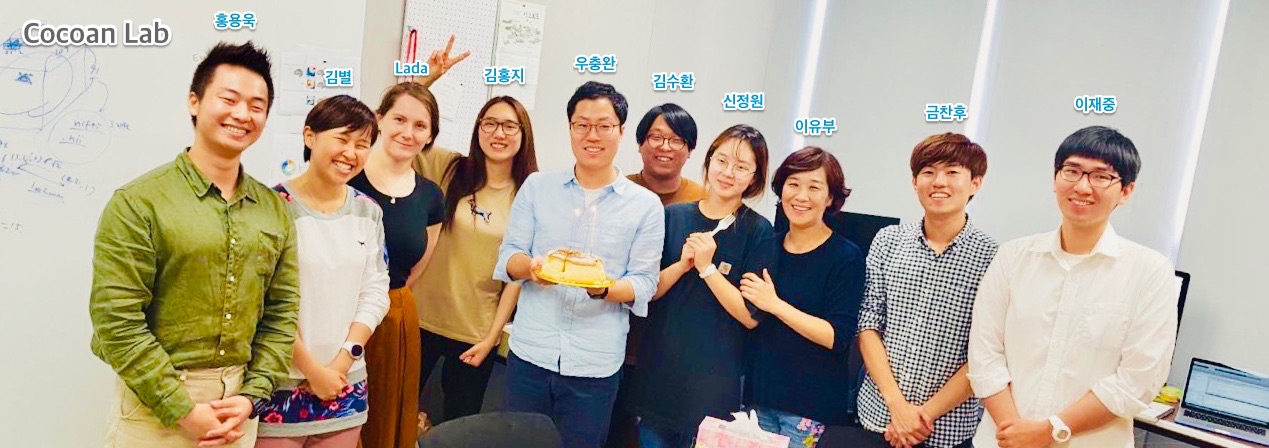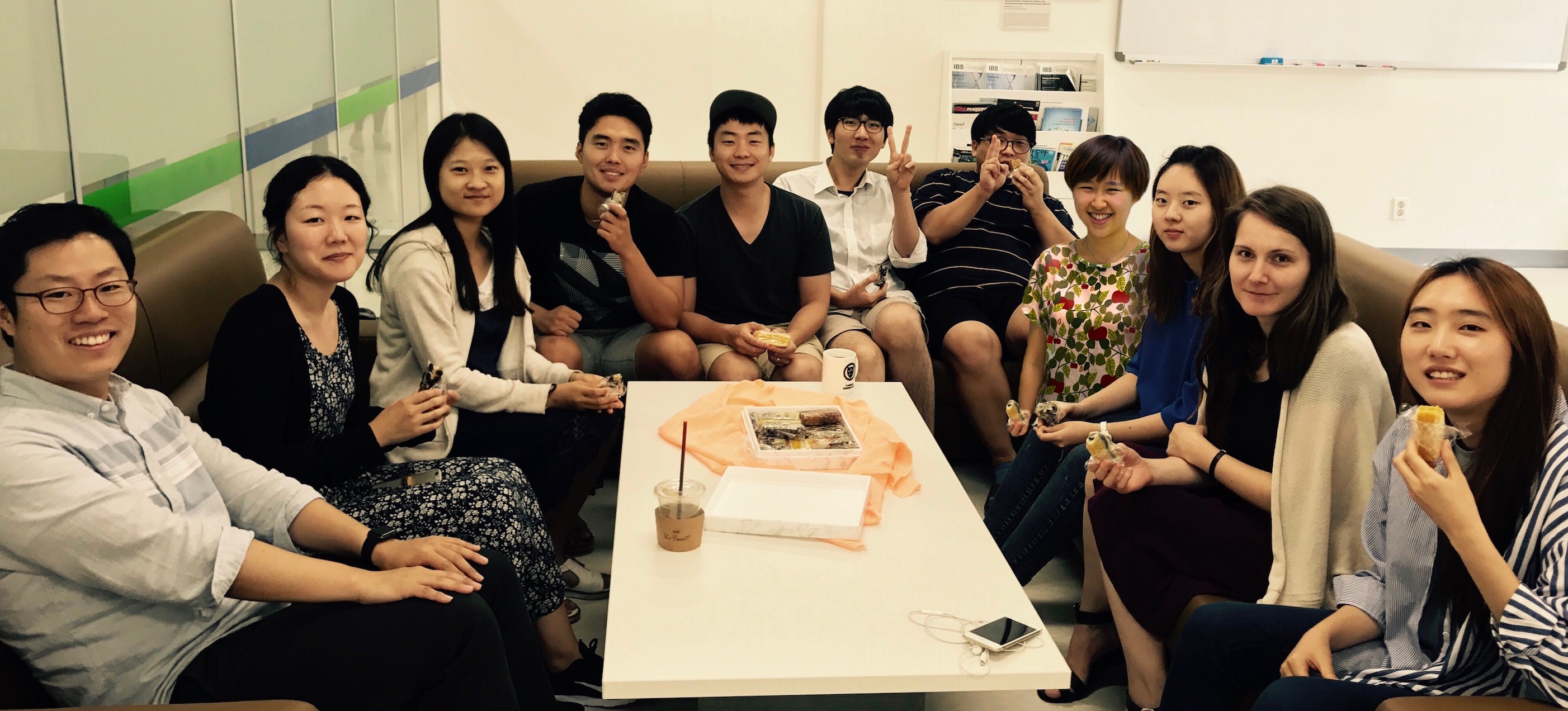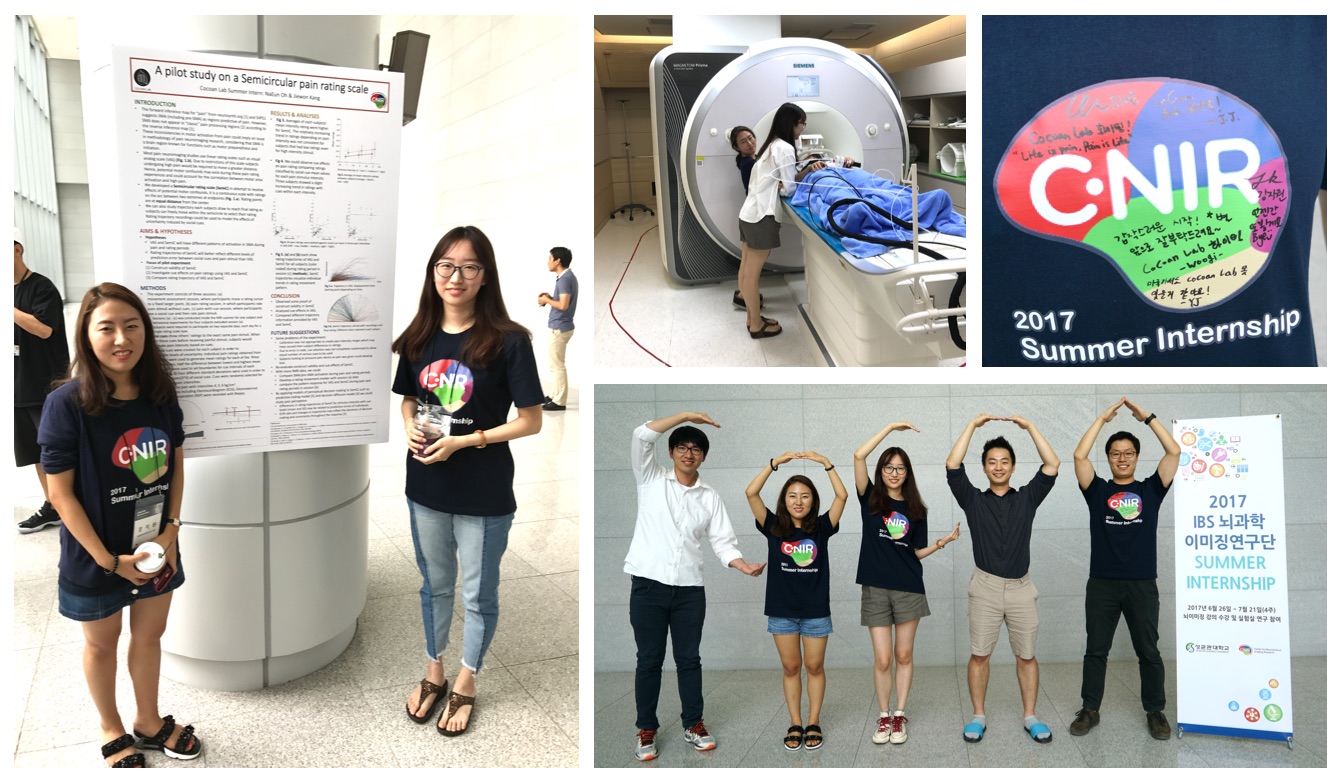Dec 2017
Jinwon Park joined the Cocoan lab!
Check out her research interests and brief introduction here.
Sep 2017
Happy lab!


Sep 2017
Myeonghun Beak, Taenyun Kim, Yelin Lee and Minie Jung joined the Cocoan lab!
Check out their research interests and brief introduction here.
Aug 2017
Lada Kohoutová, Catherine Cho, Byeol Kim and Suhwan Gim joined the Cocoan lab!
Check out their research interests and brief introduction here.
July 2017
NaEun Oh and Jiewon Kang successfully finished 2017 CNIR summer internship program.

June 2017
Hong Ji Kim, Yejong Yoo, Sooan Lee, Jeongwon Shin, and Chanhoo Kum joined the lab as undergrad research assistants.
Check out their research interests and brief introduction here.
May 2017
Jongyun Jeong joined the lab as undergrad research assistants.
Check out his research interest and brief introduction here.
March 2017
A new paper on placebo effects on painful emotions due to social rejection has been published on Journal of Neuroscience.
Here is the PDF of the paper.
Yongwook Hong and Jaejoong Lee joined the lab.
Check out their research interest and brief introduction here.
Our paper on building better neuroimaging biomarkers has been published on Nature Neuroscience.
This paper contains important ideas about what translational neuroimaging research would look like in the future. Also if you’re interested in joining the lab, you would be able to learn what our near-future research direction could be from this paper.
We are joining the IBS Center for Neuroscience Imaging Research (CNIR) at Sungkyunkwan University.
Starting March 2017, we are joining the IBS Center for Neuroscience Imaging Research and Sungkyunkwan University. Our lab will be located in Suwon, which is near Seoul in South Korea, and more specifically the N-center at Sungkyunkwan University. We are planning to hire some people (postdoc and lab manager) for the lab. If you are interested in joining the lab, you can find some relevant information here.
February 2017
Our paper on developing predictive models for pain using multi-study fMRI data is published on Nature Communications.
It’s finally online (pdf; see Publication for more links). In this new paper, we identified a new fMRI pattern that is predictive of pain above and beyond stimulus intensity and nociceptive brain response. Tor and I had this analysis idea since my second year of the graduate school, and I did the first version of this study as a final project for Tor’s fMRI method class. Thanks to our lab’s collaborative efforts to create the large-scale single-trial pain dataset, I was able to scale up the study, and the final version of the study ended up including data from six different pain studies (N = 183). This was one of the main reasons that our paper was able to be published on Nature Communications. The pattern we identified explained variation in trial-by-trial pain ratings not captured by a previous fMRI-based marker for nociceptive pain (i.e., Neurologic Pain Signature). In addition, the new pattern mediated the pain-modulating effects of three psychological manipulations of expectations and perceived control. We hope that the new pattern signature provides a generalizable and extensible characterization of cerebral contributions to pain and specific brain targets for interventions.